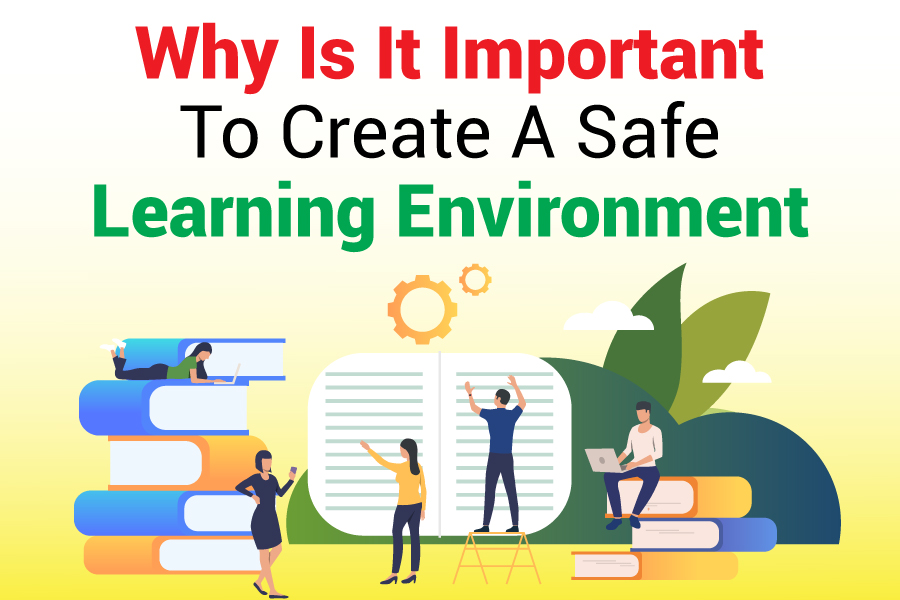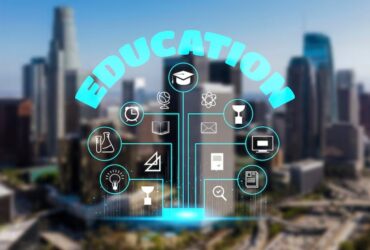In my experience as an educator, I have come to realize that fostering a safe and nurturing learning environment is paramount for student success. A secure and supportive atmosphere where learners feel valued, respected, and empowered to explore their full potential is the bedrock upon which effective learning is built. It is a critical component that transcends mere academic achievement and shapes the holistic development of young minds.
Recognizing the pivotal role of a safe learning environment, I have made it my mission to cultivate such an environment in every educational setting I am a part of. Through this article, I aim to shed light on the multifaceted aspects of creating a secure haven for learning and the profound impact it can have on students’ growth, well-being, and academic journey.
What Is A Safe Learning Environment?
A safe learning environment is a space where students feel physically and emotionally secure, free from harm, discrimination, or any form of intimidation. It is an inclusive and nurturing atmosphere that fosters a sense of belonging, encourages open communication, and promotes the exploration of ideas without fear of judgment or ridicule.
Key elements of a safe learning environment include:
Physical safety: A clean, well-maintained, and secure physical space that adheres to safety protocols and regulations.
Emotional safety: An environment where students feel valued, respected, and supported, fostering a sense of trust and confidence.
Inclusivity: A welcoming and inclusive atmosphere that celebrates diversity and promotes equity, ensuring that all students feel accepted and respected.
Respect: A culture of mutual respect among students, teachers, and staff, where differing perspectives are valued and constructive dialogue is encouraged.
Support systems: Established support networks, such as counseling services, mentorship programs, and peer support groups, to address students’ emotional and academic needs.
The Impact Of A Safe Learning Environment On Students
The impact of a safe learning environment on students cannot be overstated. When students feel secure and supported, they are more likely to engage actively in the learning process, take risks, and embrace new challenges without fear of failure or ridicule.
A safe learning environment fosters:
- Improved academic performance: Students who feel secure and supported are better able to focus on their studies, retain information, and apply their knowledge effectively.
- Enhanced emotional well-being: A safe environment promotes positive mental health, reduces stress and anxiety, and nurtures a sense of self-worth and confidence.
- Increased motivation and engagement: When students feel valued and respected, they are more motivated to participate actively in class discussions, ask questions, and explore their interests.
- Positive relationships: A safe environment encourages positive relationships between students, teachers, and staff, fostering a collaborative and supportive learning community.
- Personal growth: A secure environment empowers students to explore their identities, develop their talents, and cultivate essential life skills such as critical thinking, problem-solving, and effective communication.
Creating Physical Safety In The Classroom
Ensuring physical safety is a fundamental aspect of creating a secure learning environment. As an educator, I prioritize the following measures to maintain a safe and secure physical space:
- Regular safety inspections: Conducting regular inspections of the classroom and school premises to identify and address potential hazards or safety concerns.
- Emergency preparedness: Implementing and practicing emergency protocols, such as fire drills and lockdown procedures, to ensure students and staff are prepared for unforeseen situations.
- Classroom organization: Maintaining an organized and clutter-free classroom environment, ensuring clear pathways and minimizing potential trip hazards.
- Access control: Implementing access control measures, such as visitor sign-in procedures and secure entry points, to monitor and regulate access to the school premises.
- Collaboration with authorities: Collaborating with local authorities, such as law enforcement and emergency services, to develop and implement comprehensive safety plans tailored to the school’s specific needs.
Emotional Safety: Building Trust And Respect
Creating an emotionally safe environment is equally crucial for fostering a secure haven for learning. As an educator, I strive to cultivate an atmosphere of trust, respect, and open communication through the following strategies:
Active listening: Practicing active listening and providing students with a safe space to express their thoughts, concerns, and perspectives without fear of judgment or ridicule.
Positive reinforcement: Recognizing and celebrating students’ achievements, efforts, and progress, fostering a sense of self-worth and confidence.
Consistent and fair treatment: Treating all students with fairness, consistency, and respect, regardless of their backgrounds or abilities.
Modeling respectful behavior: Leading by example and demonstrating respectful and inclusive behavior towards students, colleagues, and the broader school community.
Confidentiality and privacy: Respecting students’ privacy and maintaining confidentiality when handling sensitive information or personal matters.
Promoting Inclusivity And Diversity In The Learning Environment
Embracing diversity and fostering an inclusive learning environment are essential components of creating a secure haven for learning. As an educator, I strive to cultivate an atmosphere where every student feels valued, respected, and empowered to contribute their unique perspectives and experiences.
To promote inclusivity and diversity, I employ the following strategies:
- Culturally responsive teaching: Incorporating diverse perspectives, experiences, and cultural backgrounds into the curriculum and teaching materials, ensuring that all students feel represented and valued.
- Inclusive language and practices: Using inclusive language and adopting practices that promote equity and respect for all students, regardless of their race, ethnicity, gender, sexual orientation, or abilities.
- Celebrating diversity: Organizing events, activities, and discussions that celebrate the rich tapestry of diversity within the school community, fostering understanding, appreciation, and respect for different cultures and backgrounds.
- Accommodating diverse needs: Providing appropriate accommodations and support services to ensure that students with diverse needs, such as those with disabilities or language barriers, have equitable access to educational opportunities.
- Ongoing professional development: Engaging in ongoing professional development and training to enhance my cultural competence, sensitivity, and understanding of diversity-related issues.
Strategies For Conflict Resolution And Addressing Bullying
Despite our best efforts, conflicts and instances of bullying can still occur within the learning environment. As an educator, I am committed to proactively addressing these issues and fostering a safe and supportive atmosphere for all students.
To effectively manage conflicts and address bullying, I employ the following strategies:
- Clear policies and procedures: Implementing and communicating clear policies and procedures for addressing conflicts and bullying, ensuring that all stakeholders (students, teachers, staff, and parents) are aware of the expectations and consequences.
- Conflict resolution training: Providing students with conflict resolution training and equipping them with the skills to resolve disagreements peacefully and constructively.
- Restorative practices: Implementing restorative practices, such as mediation and restorative circles, to address harm, repair relationships, and promote accountability and healing.
- Bystander intervention: Encouraging and empowering students to be active bystanders by speaking up against bullying and supporting their peers in a respectful manner.
- Collaboration with support services: Collaborating with school counselors, social workers, and other support services to provide targeted interventions and support for students involved in conflicts or bullying incidents.
The Role Of Teachers In Maintaining A Safe Learning Environment
As educators, we play a pivotal role in creating and maintaining a safe learning environment. Our actions, attitudes, and pedagogical approaches can significantly influence the overall climate and culture within our classrooms and the broader school community.
To effectively foster a secure haven for learning, I strive to:
Lead by example: Modeling respectful, inclusive, and ethical behavior, setting the tone for how students should interact with one another and approach their learning.
Build positive relationships: Cultivating positive and supportive relationships with students, demonstrating genuine care and concern for their well-being and academic success.
Promote open communication: Encouraging open and respectful communication, creating a safe space for students to express their thoughts, concerns, and ideas without fear of judgment or repercussions.
Embrace diversity and inclusivity: Celebrating and embracing diversity within the classroom, ensuring that all students feel valued, respected, and included in the learning process.
Continuous professional development: Engaging in ongoing professional development opportunities to enhance my knowledge, skills, and strategies for creating and maintaining a safe and supportive learning environment.
Parent And Community Involvement In Creating A Secure Haven For Learning
Fostering a safe learning environment is a shared responsibility that extends beyond the walls of the classroom or school. Engaging parents and the broader community is crucial in creating a comprehensive and sustainable approach to ensuring the safety and well-being of our students.
To promote parent and community involvement, I actively:
- Encourage open communication: Maintaining open lines of communication with parents and guardians, keeping them informed about school policies, safety protocols, and any concerns or incidents that may arise.
- Seek input and feedback: Soliciting input and feedback from parents and community members, valuing their perspectives and insights in shaping a safe and inclusive learning environment.
- Collaborate on initiatives: Collaborate with parent-teacher associations, community organizations, and local authorities to develop and implement safety initiatives, educational programs, and community-based support services.
- Foster partnerships: Building strong partnerships with local businesses, community leaders, and organizations to leverage resources, expertise, and support in creating a secure haven for learning.
- Promote community engagement: Organizing community events, workshops, and forums to raise awareness about the importance of a safe learning environment and encourage active involvement from all stakeholders.
The Long-Term Benefits Of A Safe Learning Environment
Investing in creating a safe learning environment is not merely a short-term endeavor; it yields profound and lasting benefits for students, educators, and the broader community.
By fostering a secure haven for learning, we:
- Nurture well-rounded individuals: Students who experience a safe and supportive learning environment are better equipped to develop into well-rounded individuals with strong academic foundations, emotional resilience, and essential life skills.
- Promote lifelong learning: A positive learning experience instills a love for learning and a desire for continuous growth and self-improvement, setting the stage for lifelong learning and personal development.
- Enhance community cohesion: A safe and inclusive learning environment fosters a sense of community, promoting understanding, respect, and collaboration among diverse groups, ultimately contributing to a more cohesive and harmonious society.
- Invest in future leaders: By providing a nurturing environment that empowers students to reach their full potential, we are investing in future leaders, innovators, and changemakers who will shape the world of tomorrow.
- Create a positive ripple effect: The positive impact of a safe learning environment extends beyond the individual student, influencing families, communities, and society as a whole, creating a ripple effect of positive change.
Conclusion
Creating a secure haven for effective learning is not merely a noble aspiration but a fundamental necessity for fostering student success and nurturing well-rounded individuals. By prioritizing physical and emotional safety, promoting inclusivity and diversity, and fostering a culture of respect and support, we create an environment where students can thrive academically, socially, and emotionally.
As educators, we have the unique opportunity and responsibility to shape the learning experiences of our students, and investing in a safe learning environment is an investment in their future success. By collaborating with parents, community members, and stakeholders, we can build a comprehensive and sustainable approach to ensuring the safety and well-being of our students.
Remember, a safe learning environment is not a destination but a continuous journey that requires ongoing commitment, dedication, and a willingness to adapt and evolve. By embracing this journey wholeheartedly, we can create a secure haven where every student feels empowered to reach their full potential and contribute positively to our ever-changing world.












































Leave a Reply